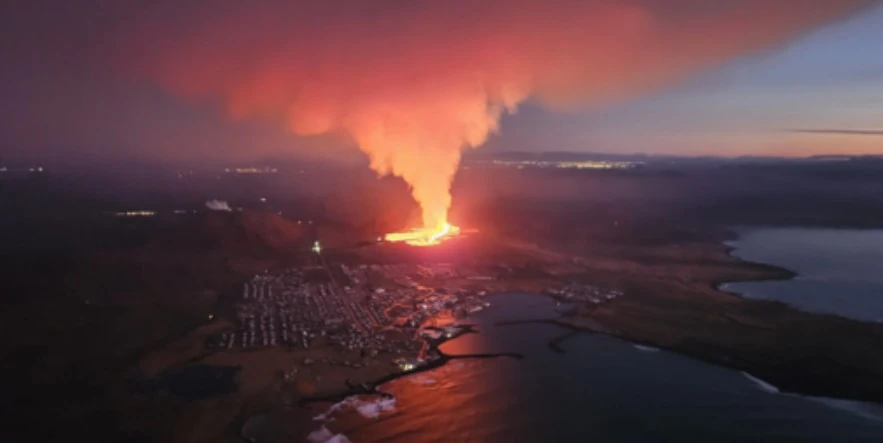Iceland builds massive dykes to shield against volcanic lava flows

Icelanders are building massive dykes to protect against possible lava flows from reactivated volcanoes near Reykjavik. The six volcanic systems, active for the first time in nearly 800 years, pose a significant threat to the Reykjanes peninsula, prompting around-the-clock construction efforts to safeguard homes and a crucial power plant.
Iceland has initiated a massive construction effort to erect protective dykes capable of shielding vital infrastructure and residential areas from the potential flow of lava. This initiative comes in the wake of volcanic activity near the capital, Reykjavik, where volcanoes that lay dormant for nearly 800 years have suddenly become active.
The Reykjanes peninsula, home to 30 000 people or nearly 8% of Iceland’s population, is under threat from six volcanic systems forecasted to remain active for up to three centuries.
The urgency of the situation has led to the deployment of nearly 100 bulldozers, excavators, and haul trucks, working tirelessly around the Svartsengi geothermal power plant. Kristinn Hardarson, leading operations at HS Orka, the energy company that owns Svartsengi, outlined the scale of the operation, which involves the use of 560 000 m3 of gravel and solidified lava rock. This material, sufficient to fill 20 000 trucks, is being strategically placed to divert the lava flows away from critical areas rather than attempting to halt them entirely—a method recommended by Vidir Reynisson, head of Iceland’s Civil Protection and Emergency Management, due to the natural tendency of lava to accumulate and overflow barriers if obstructed.
The defensive efforts extend beyond Svartsengi to the nearby town of Grindavik, a vital fishing port with nearly 4 000 residents. The town faced evacuations in December ahead of the most recent eruption. Initial barriers constructed around Grindavik successfully diverted lava away from the town, but subsequent fissures on the opposite side of the barriers led to lava reaching and igniting several houses.
The scale of the barriers is monumental, with the largest being approximately 40 m (130 feet) wide, 8 to 10 m (36 – 33 feet) high, and 4 m (13 feet) wide at the top. Completing the 7 km (4.3 miles) half-circle around Grindavik is expected to take six weeks, requiring roughly double the material used at Svartsengi. This endeavor reflects the lessons learned from previous attempts to control lava flows in Iceland and elsewhere, such as Italy and Hawaii, though those efforts were on a much smaller scale.
Read more:
Historically, Iceland has faced numerous volcanic eruptions, but the Reykjanes peninsula’s situation presents a unique challenge due to its proximity to populated areas and essential infrastructure. Previous defensive measures, like those undertaken on the island of Heimaey in 1973, have provided valuable experience in managing lava flows. Engineers are now refining the design of the barriers based on this experience, optimizing their height and steepness to ensure effectiveness.
In addition to constructing physical barriers, the Department for Civil Protection is taking steps to secure underground and overland infrastructure. Hot water pipelines are being buried deeper, while power and telecom lines are being elevated to minimize the risk of damage from lava. Further protective measures include insulating pipelines and power cables.
Iceland’s relationship with its volcanic landscape is complex, as highlighted by Sigurdur Ingi Johannsson, Iceland’s Minister of Infrastructure. The volcanoes are a source of geothermal energy, tourist attractions, and overall well-being for Icelanders, yet they also pose significant threats. This duality underscores the need for innovative and proactive measures to mitigate the risks associated with living in one of the world’s most geologically active regions.
References:
1 Iceland builds defences for a future of increased volcanic activity – Reuters – January 31, 2024
Featured image credit: IMO

Commenting rules and guidelines
We value the thoughts and opinions of our readers and welcome healthy discussions on our website. In order to maintain a respectful and positive community, we ask that all commenters follow these rules:
We reserve the right to remove any comments that violate these rules. By commenting on our website, you agree to abide by these guidelines. Thank you for helping to create a positive and welcoming environment for all.